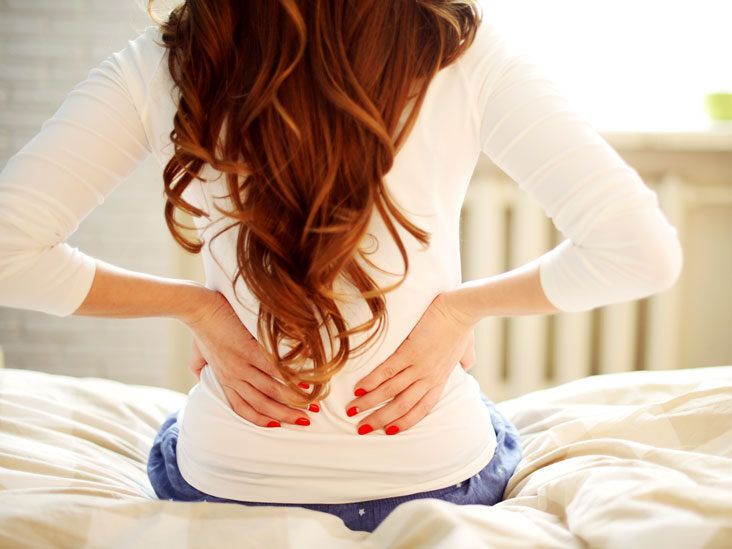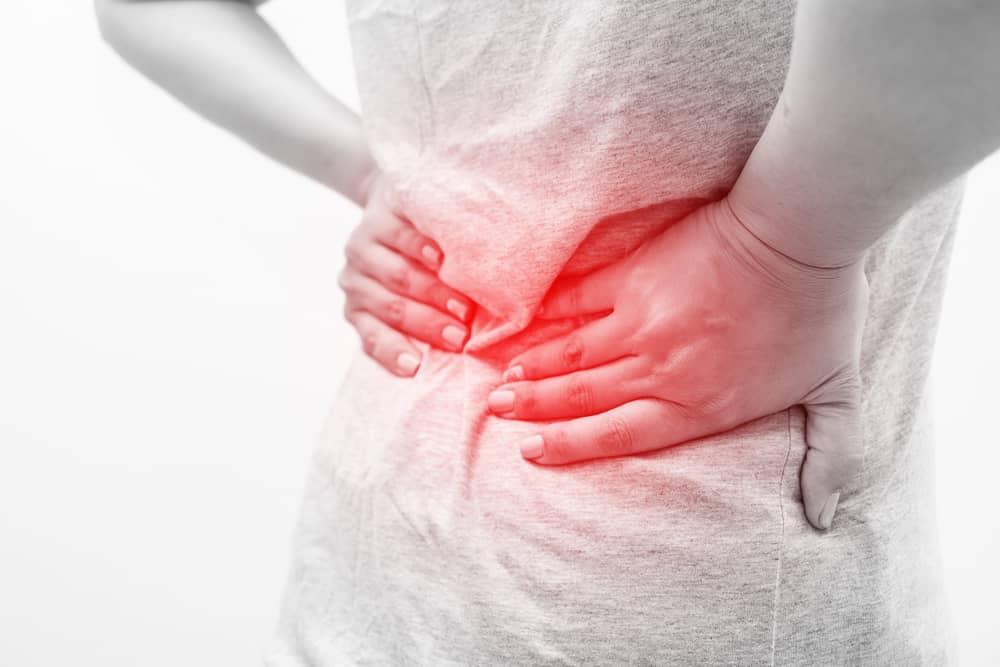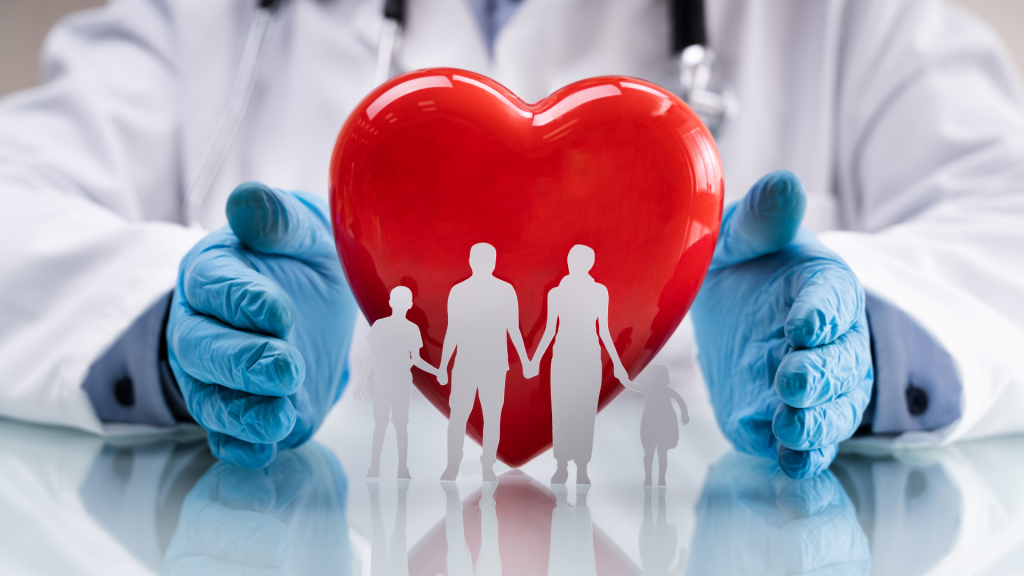Explore the causes, symptoms, and treatment options for stomach and back pain together in females, empowering women to understand and manage their discomfort effectively.
Understanding the Connection Between Stomach and Back Pain
The connection between stomach and back pain often lies in the anatomy of the body. Many structures in the abdomen, including organs like the stomach, intestines, and reproductive organs, have nerve connections to the back. When one area becomes irritated or inflamed, it can lead to referred pain in another area. This overlapping of pain signals makes it essential to consider all possible causes when addressing the discomfort experienced by females. Furthermore, conditions affecting the reproductive system can often manifest as both abdominal and back pain, highlighting the need for careful examination and diagnosis.
Common Causes of Stomach and Back Pain Together
Numerous causes can lead to simultaneous stomach and back pain in females. The most common culprits include menstrual cramps, ovarian cysts, and urinary tract infections. For instance, many women experience pain during their menstrual cycles due to the contraction of the uterus, which can radiate to the lower back. Similarly, ovarian cysts can cause discomfort in the lower abdomen and back, depending on their size and location. Additionally, urinary tract infections, prevalent in women, can lead to lower abdominal pain that may extend to the back, necessitating awareness of the symptoms and seeking timely medical intervention when necessary.
Menstrual Cramps and Pain
Menstrual cramps, medically known as dysmenorrhea, are a prevalent cause of stomach and back pain together in females. These cramps occur due to the release of prostaglandins, which cause the uterus to contract. Consequently, many women experience pain in the lower abdomen, which can radiate to the back and legs. The intensity of menstrual cramps can vary widely among individuals, with some experiencing mild discomfort while others face debilitating pain. To manage menstrual cramps effectively, women often turn to over-the-counter pain relief medications, heat therapy, and lifestyle modifications, such as regular exercise and a balanced diet.
Urinary Tract Infections (UTIs)
Urinary tract infections (UTIs) are another common cause of stomach and back pain together in females. Women are more prone to UTIs due to their shorter urethra, which facilitates bacterial entry into the urinary tract. Symptoms of a UTI may include a burning sensation during urination, frequent urination, and lower abdominal pain. In some cases, the infection can spread to the kidneys, leading to back pain. Early diagnosis and treatment of UTIs are crucial to prevent complications, including kidney infections. Treatment typically involves antibiotics and increasing fluid intake to flush out bacteria from the urinary system.
Ovarian Cysts
Ovarian cysts can also contribute to the experience of stomach and back pain together in females. These fluid-filled sacs can develop on the ovaries during the menstrual cycle and may cause discomfort. While many cysts are benign and asymptomatic, larger or ruptured cysts can lead to significant abdominal pain and backache. Women experiencing symptoms related to ovarian cysts, such as bloating, irregular periods, or sudden sharp pain, should consult a healthcare provider for evaluation and management options, which may include observation, hormonal therapy, or surgical intervention if necessary.
Endometriosis
Endometriosis is a chronic condition affecting many females, resulting in the presence of uterine-like tissue outside the uterus. This tissue can cause severe pain, particularly during menstruation, leading to stomach and back pain together. The pain can be debilitating, affecting daily activities and quality of life. Moreover, endometriosis may cause fertility issues in some women. Treatment options for endometriosis include hormonal therapy, pain management strategies, and, in some cases, surgical intervention to remove affected tissue. Early diagnosis and personalized treatment plans are essential to managing this condition effectively.

Gastrointestinal Disorders
Gastrointestinal disorders such as irritable bowel syndrome (IBS), gastrritis, and peptic ulcers can also be responsible for stomach and back pain together in females. IBS, a functional gastrointestinal disorder, often leads to symptoms like abdominal pain, bloating, and changes in bowel habits. Many women report experiencing back pain in conjunction with abdominal discomfort, making it essential to understand the potential overlap in symptoms. Gastritis, characterized by inflammation of the stomach lining, can cause a burning sensation in the stomach and may lead to referred pain in the back. Peptic ulcers, which are sores that develop on the lining of the stomach or small intestine, can cause significant abdominal pain that radiates to the back, especially if left untreated. Consulting with a healthcare provider is crucial for appropriate diagnosis and management of these gastrointestinal issues, which may include dietary modifications, medications, and lifestyle changes.
Kidney Stones
Kidney stones are another potential cause of stomach and back pain together in females. These hard deposits form in the kidneys and can lead to severe pain as they move through the urinary tract. Women experiencing kidney stones may feel intense pain in the lower abdomen and back, often accompanied by nausea and vomiting. Additional symptoms may include blood in the urine and frequent urination. Treatment options for kidney stones vary depending on the size and location of the stones, ranging from increased fluid intake and pain management to surgical interventions in more severe cases. Understanding the risk factors for kidney stone formation, such as dehydration and certain dietary habits, can help women take preventive measures.
Pelvic Inflammatory Disease (PID)
Pelvic inflammatory disease (PID) is an infection of the female reproductive organs that can lead to stomach and back pain together. PID often results from sexually transmitted infections, such as chlamydia or gonorrhea, and may present with symptoms like lower abdominal pain, back pain, fever, and abnormal vaginal discharge. Early diagnosis and treatment are crucial to prevent long-term complications, such as infertility or chronic pelvic pain. Treatment typically involves antibiotics, and in some cases, hospitalization may be required for more severe infections. Understanding the risks associated with PID and practicing safe sex can help reduce the likelihood of developing this condition.
Musculoskeletal Issues
Musculoskeletal issues, including muscle strains and spinal disorders, can also contribute significantly to stomach and back pain together in females. Muscle strains in the back can arise from activities such as heavy lifting, poor posture, or prolonged sitting, often resulting in pain that can radiate to the abdominal area. Additionally, spinal disorders like herniated discs or sciatica can lead to discomfort that presents as simultaneous stomach and back pain. While muscle strains may improve with rest, gentle stretching, and over-the-counter pain relievers, more serious spinal conditions may require physical therapy or even surgical intervention. Maintaining a strong core and practicing good posture can help prevent musculoskeletal issues that may lead to discomfort.
Gastroesophageal Reflux Disease (GERD)
Gastroesophageal reflux disease (GERD) is another condition that can manifest as stomach and back pain together in females. GERD occurs when stomach acid frequently flows back into the esophagus, leading to heartburn, chest pain, and abdominal discomfort. Some women report experiencing back pain as a result of this acid reflux, especially after meals or when lying down. Treatment for GERD often includes lifestyle changes, such as avoiding trigger foods, losing weight, and elevating the head while sleeping. Additionally, medications like proton pump inhibitors may be prescribed to reduce stomach acid production and alleviate symptoms. Understanding the connection between GERD and pain can empower women to manage their symptoms effectively.
Pregnancy-Related Pain
Pregnancy brings about numerous physical changes, some of which can cause stomach and back pain together. As the uterus expands, it can put pressure on the surrounding organs and muscles, leading to discomfort in the lower abdomen and back. Additionally, hormonal changes during pregnancy can lead to loosening of the ligaments, increasing the risk of pain. Many women experience round ligament pain, a sharp stabbing sensation in the lower abdomen that can radiate to the back. Staying active, practicing good posture, and using heat therapy can help alleviate pregnancy-related pain. However, any severe or unusual pain during pregnancy should be promptly evaluated by a healthcare provider to rule out complications.
Stress and Anxiety
Mental health can also play a crucial role in physical pain. Stress and anxiety can manifest as stomach and back pain together in females. When the body is under stress, it can lead to muscle tension, particularly in the back and abdominal area, resulting in discomfort. Stress may also exacerbate gastrointestinal issues, such as IBS or acid reflux, leading to simultaneous pain in these areas. Therefore, addressing the emotional and psychological aspects of health can be vital for alleviating physical symptoms. Stress management techniques, including mindfulness, meditation, yoga, and counseling, can help reduce the overall burden of stress and improve physical well-being. Women experiencing persistent stress-related pain should consider seeking support from mental health professionals who can offer coping strategies and therapeutic interventions tailored to their needs.
Lifestyle Factors and Their Impact
Lifestyle factors significantly influence the occurrence of stomach and back pain together in females. Poor dietary choices, lack of exercise, and insufficient hydration can all contribute to gastrointestinal and musculoskeletal issues. For instance, a diet high in processed foods and low in fiber can lead to constipation, bloating, and abdominal discomfort. Similarly, a sedentary lifestyle can weaken core muscles, increasing the risk of back pain. Incorporating regular physical activity, a balanced diet rich in fruits and vegetables, and staying hydrated can promote overall health and help prevent the onset of pain. Women should prioritize self-care and make conscious lifestyle choices that support their physical and mental well-being.
When to Seek Medical Attention
Recognizing when to seek medical attention for stomach and back pain together is crucial for timely diagnosis and treatment. Women should be aware of red flags such as severe pain, persistent symptoms, fever, vomiting, or changes in bowel habits. Additionally, pain that interferes with daily activities or worsens over time warrants a thorough evaluation by a healthcare provider. Early intervention can help identify underlying conditions and prevent complications, ensuring that appropriate treatment is administered promptly. Women should advocate for their health by seeking medical advice and expressing their concerns to healthcare professionals when experiencing unusual or concerning symptoms.

Diagnostic Approaches
When experiencing stomach and back pain together, healthcare providers may employ a variety of diagnostic approaches to determine the underlying cause. A thorough medical history and physical examination are crucial initial steps in the assessment process. Depending on the suspected cause, further tests may include blood tests, urine analysis, imaging studies such as ultrasound or MRI, and endoscopic procedures. These diagnostic tools help healthcare providers gain insights into the condition affecting the patient and guide them in developing an appropriate treatment plan. Patients should actively participate in their diagnostic process, asking questions and discussing their symptoms openly to facilitate accurate and timely diagnosis.
Treatment Options for Stomach and Back Pain
Treatment options for stomach and back pain together in females will vary based on the underlying cause and individual circumstances. For conditions like menstrual cramps or mild gastrointestinal discomfort, over-the-counter pain relievers, heat therapy, and lifestyle modifications may suffice. More serious conditions, such as endometriosis or PID, may require hormonal therapies, antibiotics, or surgical interventions. Chronic pain conditions may benefit from a multidisciplinary approach, including physical therapy, pain management strategies, and psychological support. It’s essential for women to work closely with their healthcare providers to develop a comprehensive treatment plan tailored to their specific needs, ensuring that all aspects of their health are addressed effectively.
Lifestyle Changes to Alleviate Pain
Implementing lifestyle changes can significantly alleviate stomach and back pain together in females. Regular physical activity plays a crucial role in strengthening core muscles, improving flexibility, and maintaining a healthy weight, all of which contribute to reduced pain. Additionally, women should consider dietary adjustments, such as increasing fiber intake to support digestive health and drinking plenty of water to prevent dehydration. Stress management techniques, including yoga, meditation, and deep breathing exercises, can also help reduce tension in the body and mitigate pain. By prioritizing these lifestyle changes, women can empower themselves to take control of their health and improve their overall quality of life.
Preventive Measures
Preventive measures can be beneficial in reducing the occurrence of stomach and back pain together in females. Regular check-ups with healthcare providers can help identify potential health issues early, allowing for timely intervention. Maintaining a balanced diet, engaging in regular exercise, and managing stress are essential components of a preventive health strategy. Additionally, practicing good posture and ergonomics, particularly in work and home environments, can help prevent musculoskeletal pain. Women should educate themselves about their bodies and any health conditions they may be prone to, enabling them to take proactive steps to minimize pain and discomfort.
Conclusion
Stomach and back pain together in females can arise from various causes, including menstrual issues, gastrointestinal disorders, and musculoskeletal problems. Understanding these connections is crucial for effective management and treatment. Women experiencing such pain should remain vigilant about their symptoms and consult with healthcare providers for accurate diagnosis and tailored treatment options. By adopting a holistic approach that encompasses lifestyle changes, preventive measures, and open communication with healthcare professionals, women can take charge of their health and work towards alleviating their discomfort.
Read also: immediate relief for sciatica pain an ultimate guide





